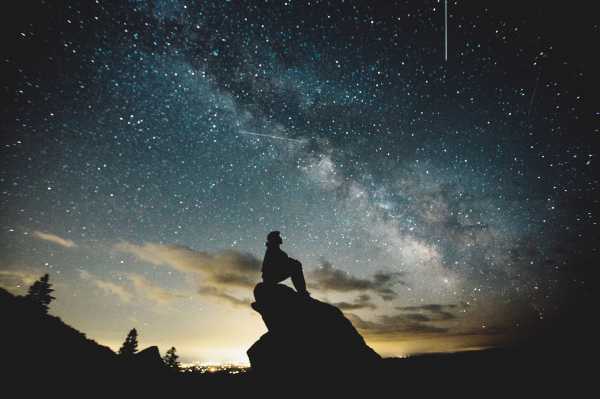
Summer is for meteor showers and stargazing. Here’s how to watch.
The Perseid meteor shower, a total lunar eclipse, and Mars at opposition: the best skywatching this summer.
By
Brian Resnick@B_resnick
Updated
Jul 2, 2018, 4:38pm EDT
Share
Tweet
Share
Share
Summer is for meteor showers and stargazing. Here’s how to watch.
tweet
share
The night sky is our window to the infinite. Above us are an untold number of stars and planets and other geologic wonders, and likely, life. It’s a hopeful place to project our thoughts and to tease our imaginations.
When I look up into space, I contemplate all the wondrous things we’re still learning about it: how more and more planets beyond our solar system are discovered every year, how black holes crashing into one another literally ripple space and time, and how somewhere, the element gold is being forged in the furnace of colliding neutron stars. And then there are the mysteries. Like how we have no idea what 95 percent of the universe is made of.
Summer may be the best time of year than the summer to lay back, look up, and soak in the wonder of the cosmos.
This summer, you can catch a total lunar eclipse, a couple of awesome meteor showers, and planets at opposition. So here’s our guide to summer stargazing. It covers where to go, what to look for and when to look for it, and what you’ll need to see it all.
Did we miss anything on this list? Let us know! [email protected]
Where to go
The trickiest part of summer stargazing may be finding a place dark enough to get a good view of the objects in the sky. As Vox has reported, nearly 80 percent of Americans cannot see the Milky Way where they live. In 2016, researchers conducted a global census of light pollution. In their map of North America below, you can clearly see there aren’t many dark places left.
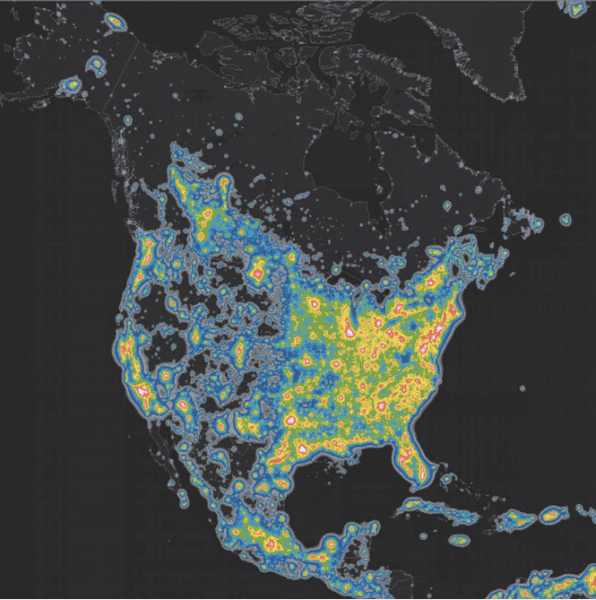
But don’t fear. Even getting a little bit out of urban areas can dramatically increase your view. Use the Dark Site Finder to find the closest dark site near you. I live in the city of Washington, DC. But just two hours away in Virginia, it’s dark enough to see the Milky Way.
What to watch out for
All summer: constellations!
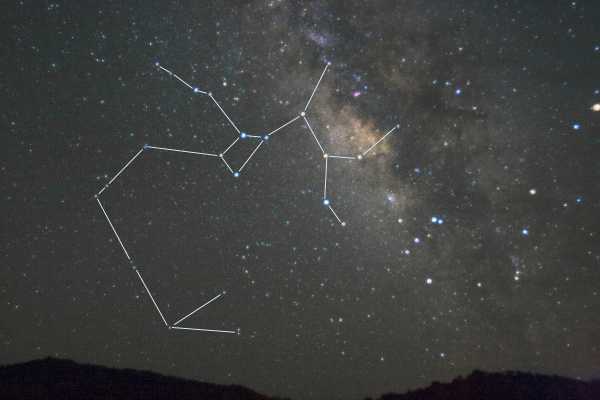
What is it? The night sky shows us different constellations at different times of the year. This is because as we orbit around the sun, our view of the galaxy shifts slightly. In the summer, in the Northern Hemisphere, we can spot the great swan Cygnus, or the champion Hercules. In the winter, the hunter Orion wields his mighty sword high above our heads.
Where to look: Spotting constellations can be fun and challenging. Like our sun rises and sets as the Earth spins on its axis, so do the stars in the sky. If you can spot a summertime constellation like Sagittarius or Cygnus in the early evening, you’ll have to look somewhere else later at night. I recommend downloading a smartphone stargazing app like SkyGuide to help you sort out where to look. If you’re more old-fashioned, there are star charts you can buy to help you locate stars based on the date and time.
June 27: Saturn at opposition
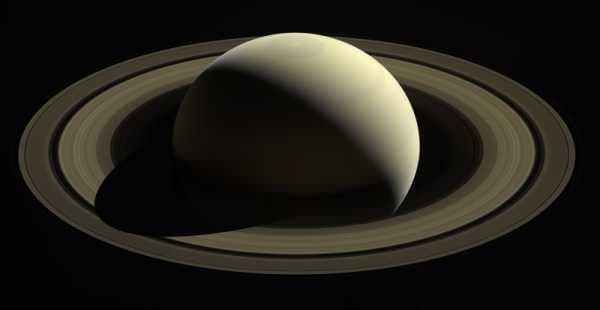
What is it? When a planet is at opposition, it means that it’s directly in line with the sun and the Earth. And when this happens, from our point of view, the planets appear brighter and slightly bigger in the sky than normal. It also means Saturn rises when the sun sets and sets when the sun rises. It will be in the sky for the entire night and highest in the sky around midnight.
Simply put: Opposition is the best night of the year to gaze upon Saturn, the furthest planet you can see with the naked eye. You probably won’t be able to make out Saturn’s rings with a pair of binoculars, but you can with a small telescope.
Where to look: Saturn will rise alongside the moon in the Southeastern sky, near the constellation Sagittarius. (A smartphone app like Sky Guide is great to pinpoint exactly where to look).
Last year, NASA ended it’s long-running Cassini mission exploring Saturn and its moons. Check out the most inspiring, beautiful, and historic images from the mission here.
July 27: total lunar eclipse
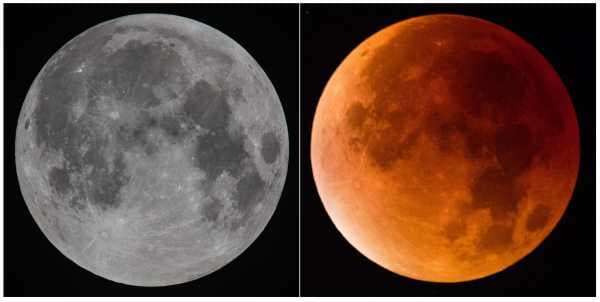
What is it? A full moon is cool. But a total lunar eclipse? Stunning.
When the moon passes into the shadow cast by the Earth, it takes on a somber, reddish, hue — sometimes called a “blood moon.” See the photo above for an example.
Lunar eclipses occur due to the merging of two different cycles. First, the moon has to be full. This means that the sun, Earth, and moon are in perfect alignment for the shadow. But there’s not a lunar eclipse every month. That’s because the moon’s orbit isn’t perfectly matched up with Earth’s. It’s tilted 5 degrees. So the second important element is that the moon falls into a “node,” a point in its orbit where the moon is on the exact same plane as the Earth. Like so:
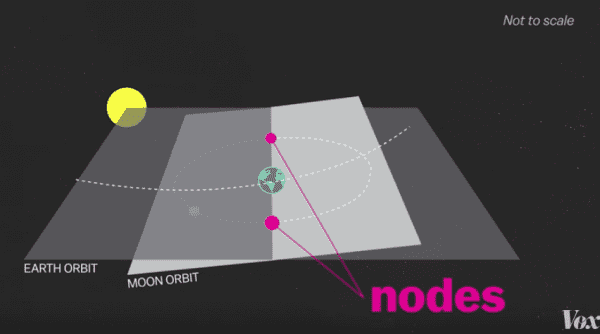
Where to look: Okay, I have a bit of a letdown here. This lunar eclipse won’t be visible in North America (except a tiny slice of Nova Scotia that will get a sliver of an eclipse at moonrise).
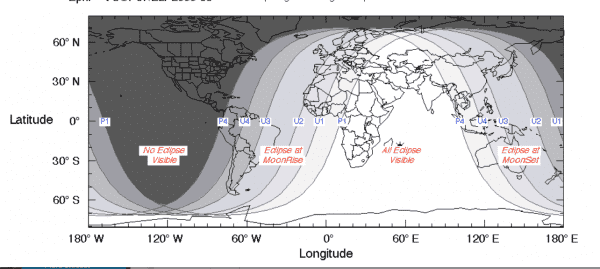
But, on the bright side, this eclipse will be visible to most of the world’s population. So that’s nice. For those of us in North America, unfortunately, the eclipse will be over before night falls and we have a chance to see it.
You don’t need any special equipment or protective glasses to view it (unlike the total solar eclipse). But a pair of binoculars will give you a better, more detailed view of the moon’s geography as it darkens in shadow. The eclipse begins at 17:14 universal time, and will fully cover the moon between 19:30 universal time and 21:13. (That will be the middle of the day for us in North America).
July 27: Mars at opposition
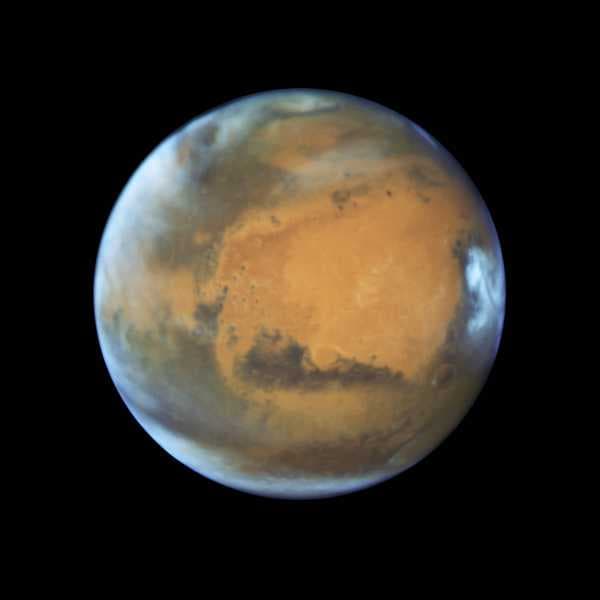
What is it? Like the opposition with Saturn, Mars at opposition means the Red Planet will be directly in line with the Earth and Sun, and therefore shine a bit more brightly in the night sky.
Mars reaches opposition once every two years. This year, though, the opposition will be a bit more special than usual. That’s because Mars will be also approaching its closest distance to the Earth in its orbit (which occurs on July 31, 2018). That proximity will make it even brighter and bigger. At opposition in July, Mars will be nearly two times as bright as Jupiter in the sky.
Where to look: Mars will rise near the moon in the Southeastern sky. It will stay near the moon the entire night as it rises and then sets in the Southwest before dawn. Again, check out an app like SkyGuide to know exactly where to look.
July 27 to 28: Delta Aquarid meteor shower peaks
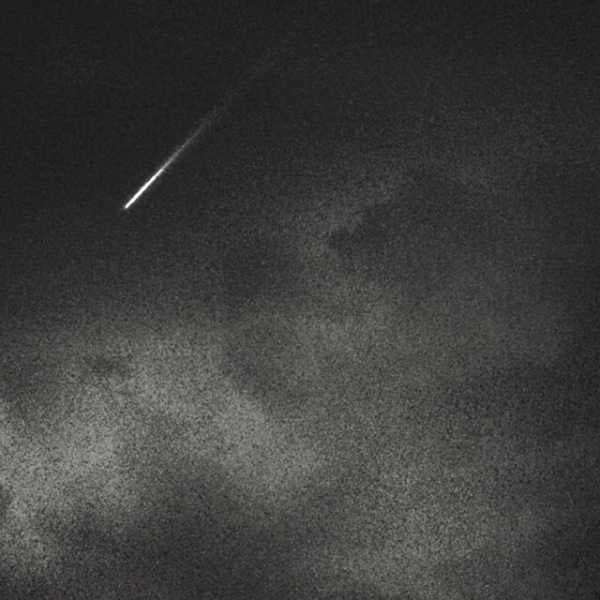
What is it? When Earth passes through the trail of debris left behind by a comet, bits of that debris catch fire in our atmosphere and streak across the sky in a blazing 3,000-degree flash. On July 27 and 28, you can look up late at night and see this celestial show during the peak of the annual Delta Aquarids meteor shower. (And it’s possible to see some Delta Aquarids in the week before the peak and a few weeks after.) This is a modest meteor shower, with just about 15 to 20 meteors per hour.
Where to look: So, a bit of a bummer. There will be a bright full moon during the peak of the meteor shower, which will diminish your ability to spot them.
But if you’re up for the task: The meteorites will appear to radiate out of the star Delta Aquarii, in the constellation Aquarius (which takes the form of a guy pouring out a jug of water). Though the show is peaking on the 27 and 28, Earthsky reports a few Delta Aquarid meteors may be seen each night until late August, and that they’re best viewed after midnight.
August 12 to 13: Perseid meteor shower
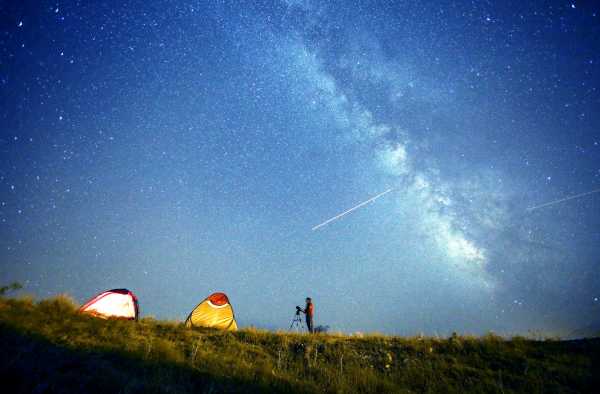
What is it? Every year in August, the Swift-Tuttle comet puts on a brilliant show. When the Earth plows into its wake, tiny bits of debris left behind from the comet slam into our atmosphere at 132,000 miles per hour, reach temperatures of 3,000 to 10,000 Farenhiet, and streak across the sky in what we call the Perseid meteor shower.
In a normal year, the Perseids are the most spectacular meteor shower we can see. Spectators can normally see around 60 to 100 meteors an hour. It’s arguably the best meteor shower of the year.
Where to look: Now, we’re in luck. This year the Perseids will peak right after a new moon, ensuring dark skies. The best time to look will be on the night of August 12th or the early morning hours of August 13.
Perseids appear to radiate outward from the constellation Perseus — you know, the mythical Greek hero who chopped off the head of the wretched gorgon Medusa and lived to tell the tale. The meteors will rain like sparks from the hero’s righteous blade. The moon will set around 10 pm, so the sky should be nice and dark for viewing.
You don’t need to look straight at Perseids to take in the shower as the meteorites trace their scorching path across the sky. Just lie back, gaze upward, and streaks of bright light should alight your eyes. As the night grows darker until dawn, the show only gets better, NASA explains.
August 4 or later: NASA launches the Parker Solar Probe
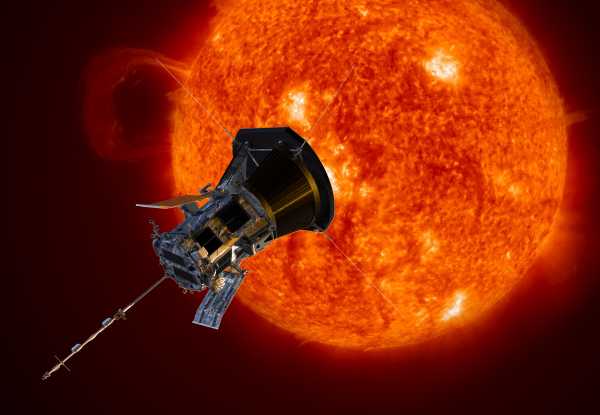
What is it? Okay, this isn’t technically a celestial viewing opportunity, but it does concern the stars. Or at least, our home star, the sun.
In August, NASA will launch the Parker Solar Probe, a spacecraft that will come within 4 million miles of the surface of the sun, much closer than any spacecraft has been before. The goal is to study the sun’s atmosphere, weather, and magnetism and figure out the mystery of why the sun’s corona (its atmosphere) is much hotter than its surface. Still, even several million miles away, the probe will have to withstand temperatures of 2,500 degrees Fahrenheit.
Where to look: The spacecraft will be launching from Cape Canaveral Air Force Station in Florida. NASA will very likely be streaming the launch on its YouTube channel. The launch window begins on August 4, but NASA may choose to delay for any number of technical reasons. We’ll keep you updated on the launch date.
September 22: Fall equinox
What is it? The end of summer, that’s what. On September 22, 2018, both the Northern and Southern Hemispheres of the Earth will receive equal amounts of daylight. It marks the end of summer in the North, and the end of winter in the South. Technically speaking, the equinox occurs when the sun is directly in line with the equator. This will happen at 9:54 pm Eastern Time on the 22nd.
Where to look: The best place to be is Mexico because, on the equinox, the pyramid at Chichen Itza on the Yucatan Peninsula puts on a wondrous show. Built by the Mayans around 1,000 years ago, the pyramid is designed to cast a shadow on the equinox outlining the body of Kukulkan, a feathered snake god. A serpent-head statue is located at the bottom of the pyramid, and as the sun sets on the day of the equinox, the sunlight and shadow show the body of the serpent joining with the head.
What to bring
Eyes: For many of the events this summer, you don’t need anything but your pair of eyes. The bright streaks of a meteor shower are visible with the naked eye, and so is the moon. The planets Mars, Venus, Jupiter, and Saturn are all visible with the naked eye. Mercury can too, but it can be very hard to spot as it rises near dawn and not very far off from the sun.
Binoculars: These are much easier to use than telescopes. Just put them on your face and look up. And with their 7-to-8 times magnification, you should be able to check out the craters of the moon in bright detail, see four moons of Jupiter, and see that some stars twinkle a more reddish light while others shine blue. You won’t, however, be able to use them to see the rings of Saturn.
Telescope: Even a simple one with 25x power will help you see the rings of Saturn or any of the planets in greater detail. They can be a bit tricky to use. So practice on a big target like the moon before hunting for planets.
Apps: The absolute easiest way to find stars and planet in the sky is by using an application on a smartphone. These apps use your location data and the phone’s motion sensors to show you exactly where to look in the sky. Just point your phone to the sky, and these apps will label what you’re seeing.
It’s super helpful for finding objects or labeling what you’re seeing. I enjoy SkyGuide (it’s just 3 bucks). There are some free options too. And for the analog inclined, you can buy star charts to help you spot celestial objects based on the time and date.
Sourse: vox.com






